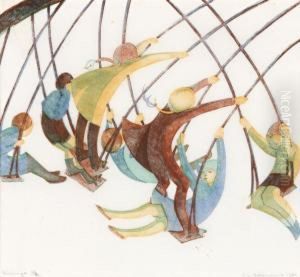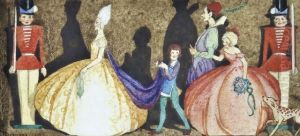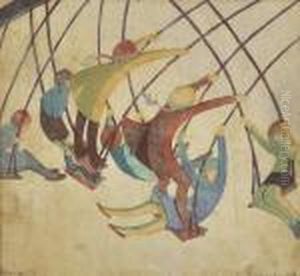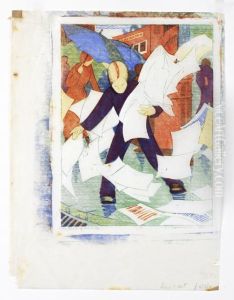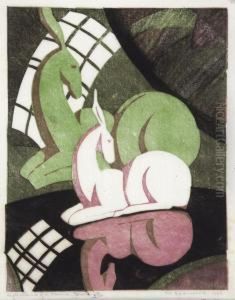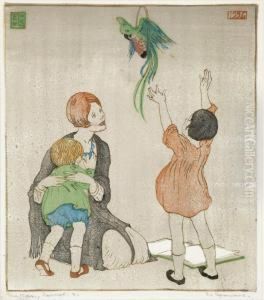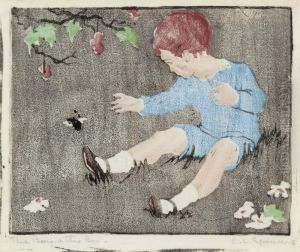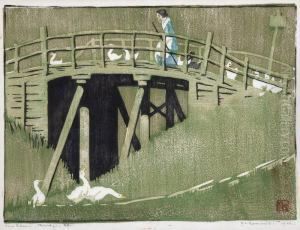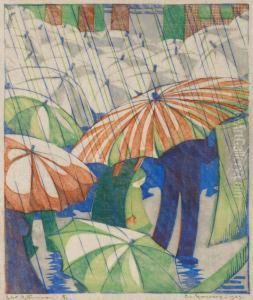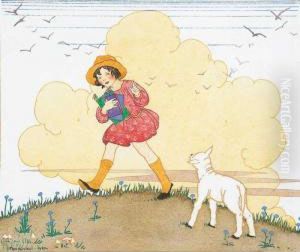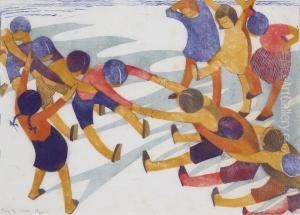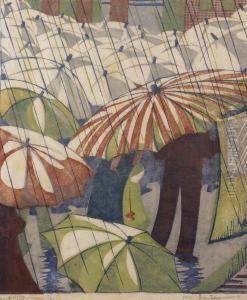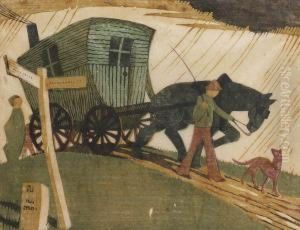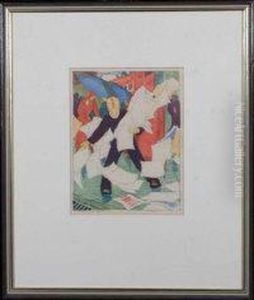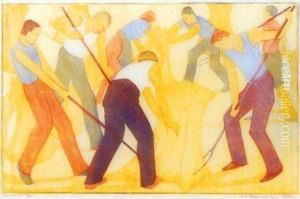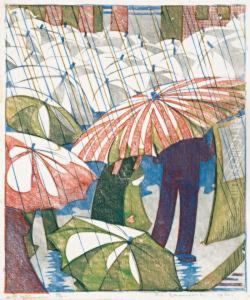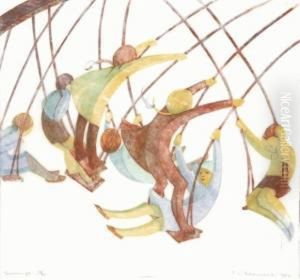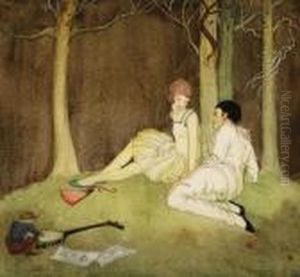Ethel L. Spowers Paintings
Ethel Louise Spowers was an Australian artist known for her work in modernist printmaking, particularly in the medium of linocut. Born on July 11, 1890, in Melbourne, Victoria, Spowers was part of a prominent and affluent family, which allowed her the financial freedom to pursue her artistic education and career. She initially studied at the National Gallery of Victoria Art School, where she was exposed to traditional artistic training. However, Spowers's artistic direction took a significant turn after her travels to Europe in the 1920s, where she encountered the vibrant art scenes of Paris and London.
In London, Spowers was deeply influenced by the Grosvenor School of Modern Art, where she studied under Claude Flight, a leading figure in the promotion of the linocut technique as a serious art form. Flight's emphasis on dynamic compositions, bold colors, and the depiction of modern life resonated with Spowers, and she quickly became one of the most prominent practitioners of the linocut technique. Her works often depicted scenes of everyday life, children at play, and the bustling energy of urban environments, characterized by a sense of movement and vitality.
During the late 1920s and 1930s, Spowers's work was exhibited widely in Australia and internationally, alongside other notable artists of the Grosvenor School, such as Sybil Andrews and Cyril Power. Her prints were celebrated for their innovative approach to color and form, and for their contributions to the modernist movement in Australia.
Beyond her artistic pursuits, Spowers was also involved in the Melbourne art community, participating in exhibitions and contributing to the promotion of modern art in Australia. She was a member of the Contemporary Art Society in Victoria, which played a crucial role in advocating for modernist art in the region.
Ethel L. Spowers's contribution to Australian art was significant, not only for her mastery of the linocut technique but also for her role in introducing and establishing modernist aesthetics in Australia. She passed away on May 5, 1947, leaving behind a legacy that continues to be celebrated for its vibrant depiction of early 20th-century life and its innovative approach to printmaking.
